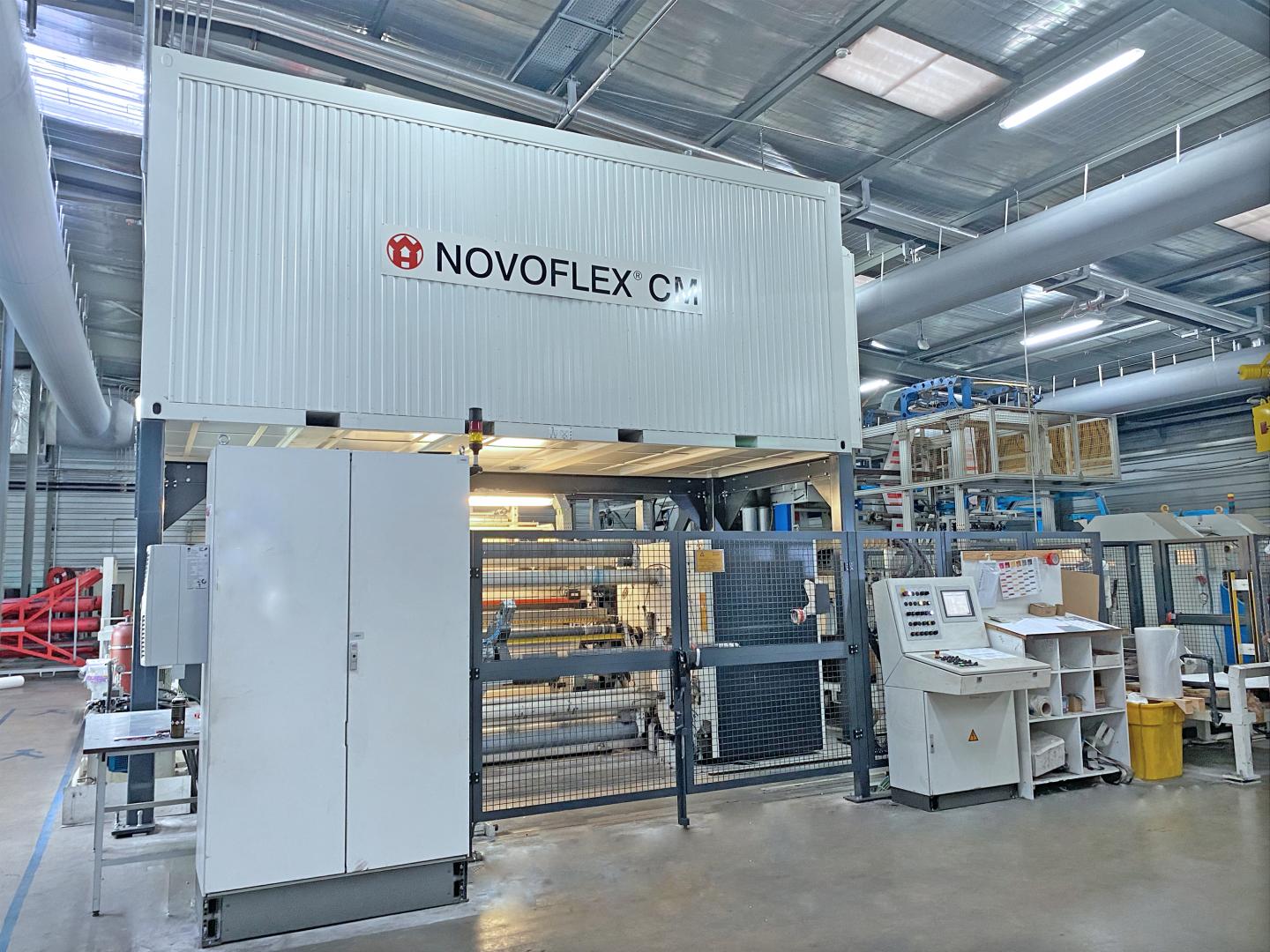Plastic Container Manufacturer Quality: Crafting Solutions for You
Plastic Container Manufacturer Quality: Crafting Solutions for You
Blog Article
Efficient Industrial Recycling Solutions for Lasting Packaging: A Comprehensive Guide
In today's significantly environmentally-conscious globe, the need for sustainable packaging services has never ever been greater. To satisfy this need, organizations across industries are actively seeking efficient industrial recycling options. Browsing the complicated landscape of sustainable packaging can be challenging without a comprehensive guide. That's where this comprehensive overview on reliable commercial recycling options for lasting packaging comes in. By exploring key locations such as product packaging product selection, making for recyclability, applying reusing framework, teaming up with reusing companions, and monitoring and gauging recycling success, this guide will furnish you with the knowledge and tools essential to make educated choices and drive positive adjustment within your company. Whether you're a packaging professional, sustainability supervisor, or just thinking about the topic, this overview will provide beneficial understandings and techniques to help you navigate the world of lasting packaging.
Product Packaging Material Option
The option of packaging materials plays a vital function in making certain the sustainability of commercial recycling remedies. When it pertains to lasting product packaging, the selection of products is vital in decreasing ecological influence and taking full advantage of recycling effectiveness. Picking the ideal materials can assist decrease waste generation, conserve sources, and advertise a circular economic climate.
One essential element to consider in product packaging product choice is recyclability - industrial metal packaging. Materials that can be easily reused and integrated back into the production cycle are favored. Products like cardboard, paper, glass, and specific types of plastics can be reused several times without shedding their high quality. On the other hand, products that are tough to recycle, such as non-recyclable composites or blended plastics, can create obstacles for the recycling process and might finish up in burners or land fills.
One more factor to consider is making use of sustainable and biodegradable materials. Product packaging made from renewable energies, such as plant-based plastics or biopolymers, can help in reducing reliance on fossil gas and mitigate climate adjustment. Additionally, biodegradable products damage down normally in time, minimizing the accumulation of waste in landfills.
Moreover, the weight and quantity of product packaging materials ought to be lessened to lower transport costs and energy usage. Light-weight products not just call for fewer resources during production however likewise add to reduce carbon exhausts throughout transport.
Creating for Recyclability
Product packaging developers must prioritize the use of products that are commonly accepted for reusing and have actually established recycling infrastructures. Materials such as glass, light weight aluminum, and specific types of plastic, like Pet dog and HDPE, are generally recycled and should be favored over products that are challenging or pricey to reuse.
One more important consideration in making for recyclability is the elimination of unneeded elements or materials. By decreasing the number of layers, coatings, and added components, product packaging can be made easier and easier to reuse. Additionally, developers should aim to decrease using blended products, as they can complicate the recycling procedure.

Implementing Recycling Facilities
Reliable implementation of reusing infrastructure is vital for the success of industrial recycling remedies. Without proper facilities in position, the recycling procedure comes to be inadequate and inefficient, impeding the total goal of navigate to these guys lasting product packaging.
To execute recycling framework efficiently, numerous essential variables need to be thought about. To start with, there should be a well-organized collection system that assists in the splitting up and collection of recyclable materials. This can include marked recycling bins in public spaces, in addition to partnerships with waste management firms for curbside pickup and sorting.
As soon as collected, the recyclable products require to be carried to recycling centers in a prompt manner. This requires effective logistics and transportation networks, guaranteeing that the products reach the appropriate facilities without hold-up.
At the reusing facilities, progressed sorting and handling modern technologies need to be in location to divide various types of products successfully. This consists of the use of automated arranging makers, optical scanners, and manual sorting methods.
In addition, there must be a robust market demand for recycled materials. This can be achieved with cooperations with manufacturers and markets that utilize recycled materials in their manufacturing processes. Producing a secure market for recycled materials incentivizes the reusing industry and promotes the circular economic climate.
Working Together With Recycling Partners

One key element of teaming up with recycling companions is the establishment of clear communication networks. It is important to develop open lines of communication to help with the exchange of information, updates, and responses. This allows both parties to remain informed recommended you read concerning the progression of reusing efforts and address any kind of difficulties or problems that may arise.
Furthermore, cooperation can include collaborations in applying and designing recycling programs. Reusing companions can offer important understandings and guidance in creating reliable collection systems and figuring out the most appropriate recycling modern technologies. By collaborating, businesses and reusing partners can enhance the recycling procedure and reduce waste.
Additionally, partnership can prolong beyond the functional facets of recycling. It can also include campaigning for and education and learning efforts. By signing up with pressures, organizations and reusing partners can increase awareness regarding the relevance of reusing and promote the adoption of lasting product packaging practices among consumers and other stakeholders.
Monitoring and Measuring Recycling Success
To guarantee the efficiency of commercial recycling solutions and the achievement of lasting packaging goals, it is vital for businesses and their recycling companions to establish a detailed system for monitoring and gauging reusing success (industrial packaging solutions). Determining and tracking reusing success enables businesses to examine the influence of their reusing initiatives, recognize locations for improvement, and established meaningful targets for future progress
One means to track recycling success is with using information collection and evaluation tools. By gathering data on the quantity of packaging waste produced, the percent of waste that is reused, and the kinds of materials being reused, organizations can get valuable insights right into their recycling efficiency. This information can then be analyzed to identify fads, patterns, and locations of inadequacy.
An additional essential facet of tracking and measuring recycling success is establishing standardized and clear metrics. This enables businesses to contrast their performance versus industry benchmarks and track their development with time. Metrics such as recycling prices, waste diversion prices, and greenhouse gas exhausts can provide a quantitative procedure of a company's reusing success.

Verdict
To conclude, implementing effective commercial recycling remedies for lasting product packaging needs mindful consideration of packaging product selection, creating for recyclability, implementing reusing framework, teaming up with recycling companions, and tracking and gauging reusing success. By integrating these methods, businesses can contribute to an extra environmentally-friendly and sustainable technique to packaging, decreasing waste and advertising the circular economic climate.
By discovering key areas such as packaging material choice, designing for recyclability, implementing reusing facilities, collaborating with recycling partners, and monitoring and gauging recycling success, this overview will certainly furnish you with the expertise and devices necessary to make enlightened choices and drive favorable modification within your company. Packaging designers need to prioritize the use of materials that are extensively approved for reusing and have established reusing infrastructures.Cooperation with reusing companions is vital for the successful execution of commercial recycling options and the success of lasting packaging goals. By signing up with forces, services and recycling companions can elevate awareness regarding the significance of reusing and advertise the adoption of lasting product packaging practices among consumers and other stakeholders.
By collecting data on the amount of packaging waste produced, the percent of waste that is recycled, and the kinds of materials being recycled, companies can acquire important understandings right into their recycling efficiency.
Report this page